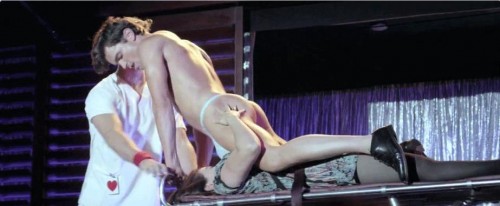We have a fun post about the various ways in which Prince Charles was posed with Princess Diana in order to obscure the fact that she was about his height. Building on this, Geoffrey Arnold at The Social Complex has collected some examples of men’s height being manipulated in order to preserve the social illusion that men are taller (or at least not shorter) than women.
See also Arnold’s guest posts introducing the concept of heightism as a gendered prejudice and discussing heightism (and other icky stuff) at Hooters.
Lisa Wade, PhD is an Associate Professor at Tulane University. She is the author of American Hookup, a book about college sexual culture; a textbook about gender; and a forthcoming introductory text: Terrible Magnificent Sociology. You can follow her on Twitter and Instagram.









